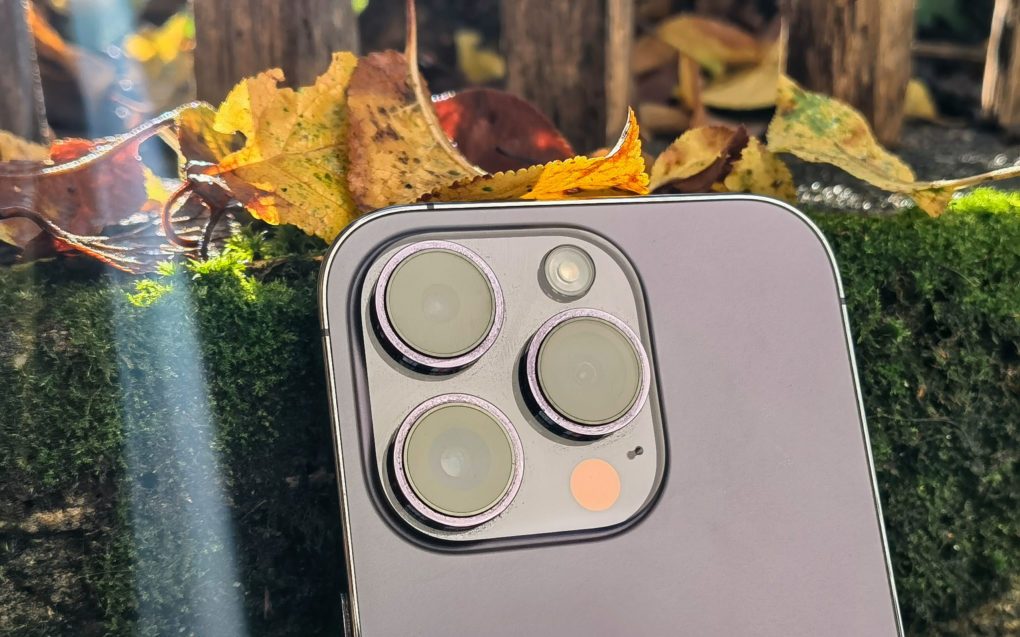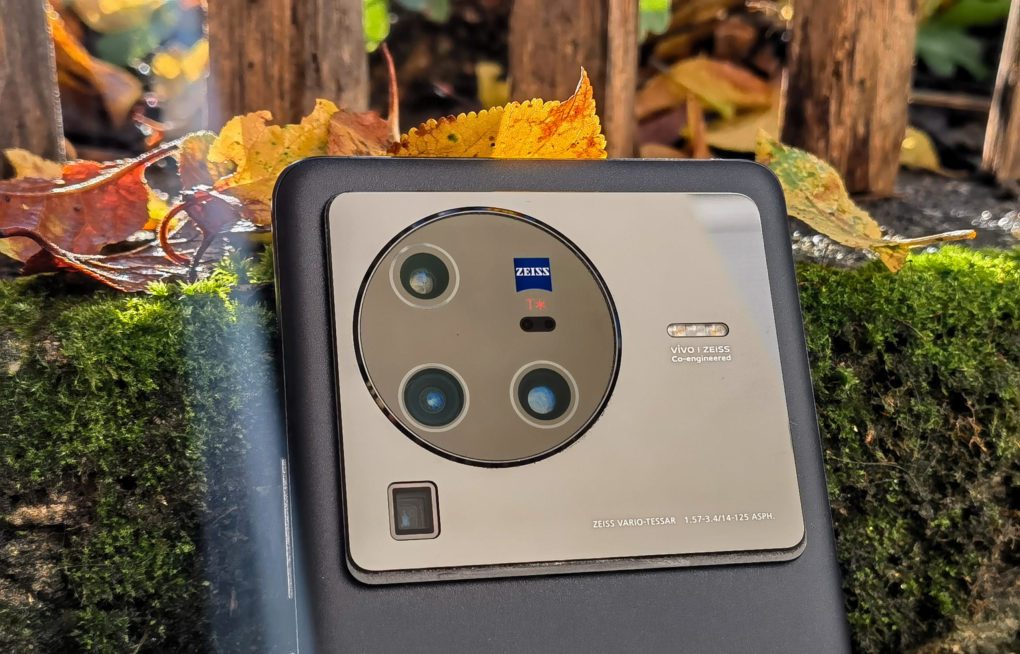Did you know that Apple used 12 megapixels as the resolution for the main iPhone camera for seven years? From year to year, the sensors have gotten bigger and the aperture brighter, but Apple has always stayed true to the resolution. This year, however, there was an innovation in terms of resolution with the iPhone 14 Pro.
The main sensor now has a resolution of 48 megapixels, which is four times as much as the iPhone 13 Pro is. Of course, the expectations are huge, but is the new camera really that good? In order to be able to answer this question, let’s put the iPhone 14 Pro against the in-depth camera comparison Vivo X80 Pro – which for some testers is the number 1 in smartphone photography.
iPhone 14 Pro camera data
Apple installs a triple camera on the back, which is also supported by a LIDAR sensor. The main camera has received a major update on paper compared to last year. It now has a resolution of 48 megapixels and, at 1/1.28 inches, is significantly larger than the 13 Pro.
There is also an ultra-wide-angle camera with a resolution of 12 megapixels and a sensor size of 1/2.55 inches. The third camera is a 12 megapixel telephoto camera with 3x optical magnification. Digital can be zoomed up to 15x.
Camera data of the Vivo X80 Pro
The Vivo X80 Pro even has a quad camera, which was created in cooperation with Zeiss. A 50 megapixel sensor with a bright aperture of f/1.57 is used as the main camera. It’s quite large at 1/1.3 inch, which, together with the bright aperture, gives hope for good low-light shots. There is also a 48 megapixel ultra wide-angle camera, which is significantly larger than the iPhone 14 Pro.
The Chinese manufacturer also installs two zoom cameras with different focal lengths. The first of the two has a resolution of 12 megapixels and enables a 2x optical zoom. It also comes with gimbal stabilization, which is particularly advantageous for videos. The second lens is an 8 megapixel periscope sensor that enables a 5x optical zoom. Digital can be zoomed up to 60x.
Camera data of both smartphones at a glance
| iPhone 14 Pro | Vivo X80 Pro |
| 48 MP wide-angle camera -IMX 803 -1/1.28 inch -f/1.8 -OIS |
50 MP wide-angle camera -Samsung GN5 -1/1.3 inch -f/1.57 -OIS |
| 12 MP ultra wide angle camera -IMX 633 -1/2.55 inch -f/2.2 -13mm |
48 MP ultra wide angle camera -IMX 598 -1/2 inch -f/2.2 -14mm |
| 12 MP telephoto camera -IMX 714 -1/3.5 inch -f/2.8 -77mm (triple) |
12 MP telephoto camera -IMX 663 -1/2.93 inch -f/1.85 -50mm (2x) -Gimbal stabilization |
| LIDAR scanner -IMX 590 |
8 MP periscope camera -(unfortunately unknown sensor) -(Unfortunately unknown size) -f/3.4 -125mm (5x) |
The following link will take you to all of the following images in their original resolution.
a notice: The following camera comparison only deals with photos without filters, additional settings and activated AI. The ratings are based on the original recordings (see above). Please be sure to compare the original photos so that you can decide for yourself which smartphone takes the better photos. Videos and selfies are not included in this camera comparison.
main camera
Both smartphones deliver great results with the main camera in good lighting conditions, which are very similar. It is noticeable that the iPhone 14 Pro tends towards more natural colors compared to the X80 Pro, which I personally like a little better. The iPhone doesn’t always reproduce colors perfectly either, but it is ahead of the curve in this respect, especially in the first comparison. The Vivo overdoes it a bit with the colors and due to the (too) aggressive dynamic range less detail is retained on the ground than the iPhone 14 Pro. However, the last comparison shows pretty well that the dynamic range of the X80 Pro is better in most cases.
There are minimal differences in favor of the Android smartphone in terms of sharpness. While the iPhone retains a little more detail in the first comparison, the X80 Pro provides a slightly sharper photo in the second and third comparison.
As soon as the lighting conditions deteriorate, the Vivo X80 Pro is convincing across the board. The iPhone 14 Pro still takes very good pictures, but the Vivo is in a different league.
In principle, the recordings are brighter, which is not always an advantage, but definitely in the above comparisons, because this means that more details are visibly preserved in dark areas. The results of the Android competitor are also sharper in bright areas – which, by the way, are much better exposed by the X80 Pro. In the last comparison, for example, you can see very well that Apple sharpened too much artificially.
Ultra wide angle camera
I am actually a bit disappointed with the ultra wide-angle camera of the Vivo X80 Pro in good light conditions, because I would have expected more from such a large sensor with 48 megapixels. The iPhone 14 Pro also takes the somewhat more natural photos here, which are sharper and better exposed (see first comparison). The building on the Vivo is overexposed and on top of that the ground looks terrible. It looks pink/red and you won’t find any details here.
In the second comparison, there are almost no differences. The green looks slightly more accurate with Apple, but I’m also satisfied with the Vivo here. Absolutely no differences can be seen in sharpness.
Fortunately, the ultra-wide-angle camera of the X80 Pro is convincing across the board in low light. The results are a bit brighter and a good deal more detail is preserved, which is particularly noticeable in the first comparison. In addition, bright areas are slightly overexposed on the iPhone 14 Pro, which is not the case on the Vivo.
zoom
Let’s start with 2x zoom shots. In my opinion, the iPhone 14 Pro delivers somewhat nicer colors here, whereas more details are preserved with the Vivo. If we zoom in a bit closer, Apple wins, since the telephoto camera is used from 3x magnification. The X80 Pro has to use a digital zoom at 3x magnification.
However, if you want to zoom even closer to objects, the Vivo X80 Pro is a clear winner. The recordings are visibly sharper and do not begin to rustle so quickly in low light.
Conclusion
The new 48 megapixel main camera of the iPhone 14 Pro undoubtedly takes excellent pictures, but to be honest I have to say that the differences to last year’s iPhone 13 Pro are very limited. I would have expected a little more sharpness, especially in comparison to the Vivo X80 Pro, because it takes (minimal) sharper pictures. In addition, the Android flagship has the better dynamic range and outclasses the iPhone in poor light conditions. So, in my opinion, the point for the main camera goes to the Vivo X80 Pro, even if I like the iPhone colors noticeably better in good lighting conditions.
The ultra wide-angle cameras of both smartphones could hardly be more different. While the iPhone produces great photos with decent colors and decent sharpness in daylight, Vivo exaggerates with the colors and swallows some details. However, if the lighting conditions are worse, the Vivo clearly wins over the iPhone with brighter and sharper images. So for me there is no clear winner when it comes to the ultra-wide-angle camera.
If you attach great importance to the zoom capability of your smartphone, there is actually no way to the iPhone 14 Pro. While 3x zoom shots look better, the X80 Pro has more flexibility when zooming due to the two telephoto cameras. Between 2x and 2.9x magnification there is still no clear winner for me, because Apple displays colors more accurately and Vivo provides more details, but from 5x magnification the X80 Pro is clearly ahead. So the Vivo wins the zoom comparison.
In conclusion, it can be said that I personally tend to Vivo X80 Pro because I attach great importance to the low light performance and the zoom. However, I would like Vivo to get a little more out of the ultra-wide-angle camera and make the color reproduction a little more realistic.
How do you see it? In your opinion, which smartphone delivers the nicer or better photos? Please let us know.
recommendations for you
Tag: iphone design, iphone 14, apple iphone, iphone release

